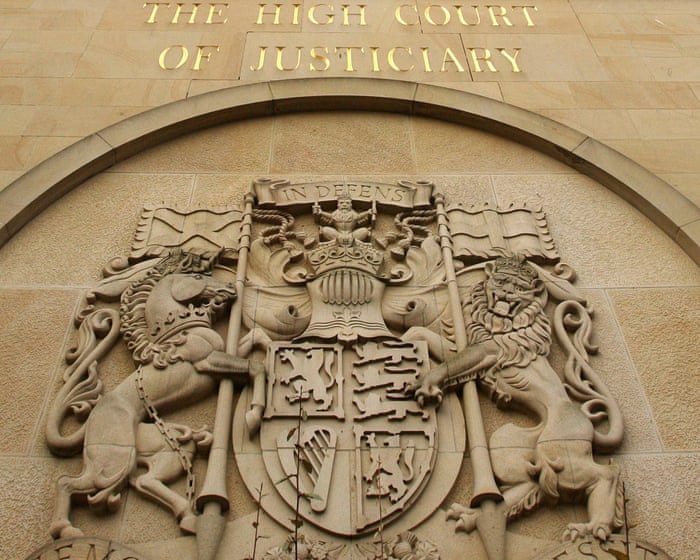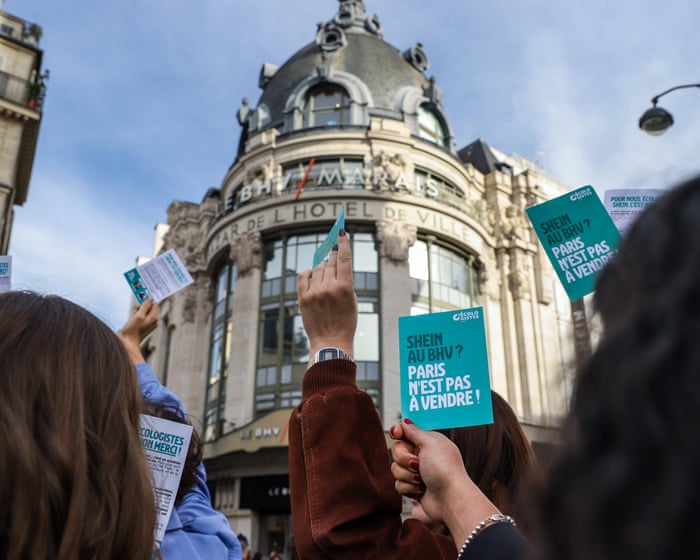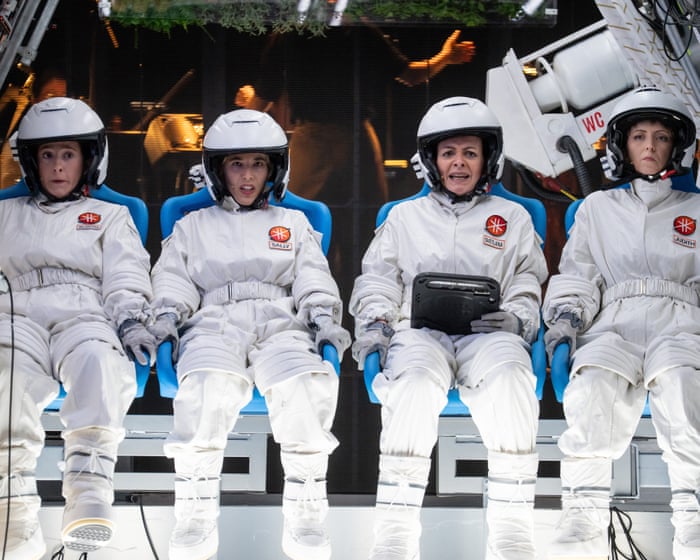Michael Flatley’s feet once moved so rapidly they could tap 35 times per second, leading to a £25 million insurance policy on his legs. He hasn’t danced in almost a decade—not even privately, he admits—so those “feet of flames” that captivated 60 million people over more than 40 years must be in quite a state now.
We’re seated at a table in the deserted breakfast room of Dublin’s InterContinental hotel when Flatley suddenly rests his right foot on the chair beside me: a size eight, small and sockless in plain black sneakers. I joke that if my feet had earned me a spot on the Sunday Times Rich List, I’d pamper them with silk socks and thank them every night. “Well, listen,” he replies, “I don’t really think about any of that. To be honest, I don’t think much about myself.”
Self-effacement isn’t what Michael Flatley is known for, especially given the confidence of his stage presence. But he insists, “I don’t even look at myself. I don’t give that 10 seconds of my time… I get up to the mirror, brush my teeth, say ‘Oh dear’—and I’m gone.”
Flatley burst into the public eye in 1994 with Riverdance, a seven-minute spectacle during the Eurovision song contest interval in Dublin. He kicked and clicked to pounding drums, his satin shirt flowing over his bronzed chest, arms outstretched. Even his voluminous hair seemed to redefine Irish dancing. Each subsequent show—from Lord of the Dance and Feet of Flames to Celtic Tiger—offered even more excitement for the audience. At 67, Flatley still seems driven by that rhythm, constantly asking, “What’s next?” as he glances around the breakfast room.
He claims to have relaxed his guard a bit, but he appears sharp in a navy jacket with a raised silk collar and what he calls “a bit of warpaint” applied by his wife, Niamh, who was in the original Riverdance chorus and later his leading lady. We meet the day after he launches the 30th-anniversary tour of Lord of the Dance, amid news of the Irish presidential election, where he had considered running as an independent candidate.
Influential figures who approached him believed Ireland needed fresh energy. “I was trying to picture what the presidency would be like with me at the helm,” he says, drumming his fingers on the tablecloth. “Meeting world leaders, bringing business and art back to Ireland.”
He decided against running after a heartfelt talk with his 18-year-old son. Diagnosed with an aggressive cancer in 2023, Flatley is still undergoing treatment and monitoring, unable to secure the required clean bill of health. Besides, he notes, “As president, you need permission just to leave the country or meet world leaders… That’s too restrictive for me.”
He likely has world leaders on speed dial. “I’ve met a few,” he acknowledges. “Tony Blair, Obama, the Clintons gave me awards. Putin, Berlusconi, Mandela.” He doesn’t hesitate to list those names together, as his respect for authority transcends politics. He even performed at Donald Trump’s inaugural ball.
“Please don’t make a big deal of this,” he says. “I was born in America. I grew up boxing and swinging sledgehammers on construction sites. If the president of your country asks you to perform, it takes a better man than me to refuse, no matter who it is. ‘It’s my honor, sir. Yes, sir.'”
“America gave my parents their dream—a job,” he adds, tapping the table again. It seems to be a reflex when he speaks of energy, work, and dreams, as if keeping time to a beat only he can hear.
“It’s like I have a Ferrari…””I have Formula One racing constantly going through my mind, and I can’t turn it off,” he says. This relentless drive stems from being “fanatically driven.” His mind is always active, often keeping him awake at night. He’s only had five hours of sleep. Each morning, he starts with two double espressos, goes for a swim, and then takes a power walk. Although he speaks slowly, his words seem deliberate, as if he’s overriding an insistent internal rhythm.
“They took away the show I created, leaving me on my own with my back against the wall,” he recalls.
The issue is, “There’s always another dream waiting to happen,” he explains. Last year, he launched Flatley whiskey. He also paints using his feet and hands—his one exhibition sold out for a seven-figure sum. At the anniversary launch, someone told him, “Well, you’ve done it all!” to which he replied, “Nonsense! I’m only just getting warmed up.”
What more does he want to achieve? “I don’t know,” he admits. “Everything.” But he can’t have everything. “Why not?” he challenges. What does “everything” even mean?
“I don’t know. I don’t know what that means,” he says quickly. “Whatever it is, I’m in search of it… I want to do everything I can while I’m still alive to leave a mark. We’re so insignificant, gone in the blink of an eye. How many of us will be remembered? Mandela, Ali.” When asked if he includes himself, he responds politely, “Thank you for saying that, but it’s not necessarily true.”
When Flatley lived in London’s Little Venice, he passed a graveyard every morning after his double espressos without much thought. “One day, I took a shortcut through it and realized, ‘My God, you never took the time. Look at all these people. They’ve given their whole lives already.'”
“Having said that,” he continues, “I’m going to give it hell to do the best I can while I’m here… God bless me, I’m in the joy business. I’m in the joy business.” He spreads his arms wide. “I can look back on my deathbed and say, ‘You fucking went for it.’ I’m sorry for my language, Paula. Forgive me. I absolutely went for it. That’s just the truth.”
Although Flatley considers himself “100% Irish,” he grew up in Chicago. His parents emigrated to the U.S. in 1947 to find work. His mother cared for their five children and helped his father build their construction business.
Flatley, who danced 300 shows in 1997 alone, credits his parents for his strong work ethic. He often mentions the sledgehammer and cold winters when talking about his background—there was always more work to do. On non-school days, his father would bang on the door, shouting, “Let’s get in the truck, let’s move, let’s move, LET’S MOVE!” Even after he succeeded, his mother urged him, “Mikey, give up that old dancing lark now and go off and make a few movies.”
Young Flatley also boxed. He started dancing at 11, practicing alone in the garage to catch up with his peers. Sometimes, he danced for 16 hours a day, just him and a broken mirror, pounding his feet on the concrete floor. He dreamed of becoming world champion. His extended family included a discus and hammer champion, a dancing champion, and a champion boxer.
“Breeding beats feeding,” Flatley’s father used to say.
The trophies piled up: “Seven all-American titles, five all-Canadian titles… but I couldn’t get a look-in in…””Ireland,” Flatley begins, reflecting on the rigid structure of traditional Irish dance. “It was very…” He pauses, careful with his words. “I don’t want to use a term that might come across as offensive.” When I suggest “prudish,” thinking of his signature open shirt and David Hasselhoff-inspired hair, he reacts with mock indignation. “I can’t say things like that! Let’s say restricted. Restrained.”
To become world champion at 17, he had to suppress his natural flair. He wore a kilt and kept his “arms tight, with no flamboyant gestures…” But he admits sadly, “I felt like only half of me was on stage.”
Over the next 18 years, he developed his signature style. After the Irish folk band the Chieftains invited him on tour, he found that “the more I used my body, facial expressions, energy, and emotion, the more the audience responded.” Once, when he couldn’t find his costume—”like many bachelors, I had shirts and things under the bed. Where’s that tuxedo?” he joked, peeking under the tablecloth—he went on stage bare-chested, and the crowd loved it.
Throughout this time, he worked with his father, returning from performances on a one-way standby ticket with Allegheny Airlines and heading straight to work. “I’d be swinging that damn sledgehammer at 6 a.m. in the freezing Chicago winters.” But it didn’t matter, he says, because “I got my chance to be the star of the show… and that was enough to keep the fire burning.”
At 35, an age when many dancers think about retiring, Flatley was asked to perform in Riverdance. Just as he seemed to have made it, eight months after the full show opened in 1995, he was fired for wanting creative control. “You wouldn’t tell a great painter, ‘Paint that, but don’t use any red,'” he argues. Although the music was by Bill Whelan and the show produced by Moya Doherty and John McColgan, Riverdance remains closely linked with Flatley.
“They took away the show I created, and I was on my own, my back against the wall, with tears streaming,” he recalls. He describes himself as “terribly sensitive,” noting he can spot the one person sitting during a standing ovation and wonder, “What did I do wrong? Why didn’t I reach that one?” After Riverdance, he felt alone again, much like in the garage with the cracked mirror.
Within a year, he launched Lord of the Dance. “It was a buzz, like a drug,” he says, describing the thrill of standing between the audience and his dancers, feeling like he had the Roman legion behind him or the roar of Concorde. “Dadada dada dadada… You could feel the dancers’ energy. ‘I’m here, look at me.’ And for every bit of energy they gave, they got tenfold back from the audience. It was an exchange of energy.”
In essence, he made Irish dancing sexy.
“I’m not sure if that’s true, but thank you for saying it,” he replies.
His autobiography hints at a wild lifestyle, with tales of late nights and parties in hotel rooms, but he cuts me off. “No, no. I have a wife and son now, and it wouldn’t be fair to them or to me.”
He and Niamh have been married for 19 years, and he says, “I can’t recall us ever having harsh words… Of all the things I’ve gained from my dance career, my wife comes first.”
He does acknowledge that powerful men often have strong drives, clarifying, “And that’s not a dirty thing. They’re driven, and I believe the truly great ones channel that into their vision of success… or into my dance shows.”
The intensity and speed of his performances have taken a heavy toll on his body. He used to consume three steaks a day.With only 7% body fat, he’s now intimately familiar with every painful vertebra in his spine. “My C1, my C3, my T3, my L5, my sacroiliacs…” He has torn muscles, damaged bones, ruptured tendons, shoulders that need replacing, and a fractured rib that still bothers him when he speaks.
At his peak, Lloyds of London, who insured his legs, told him, “Flatley, it’s like you’re fighting a 15-round fight every night.” They placed iced water next to the stage. “After the encore, I’d dunk my head in the ice to cool down my brain,” he recalls. In his dressing room, he had “The Beast”: a barrel of iced water. “I’d get in and sit there as long as possible to reduce the swelling in my muscles.”
This might explain his love for swimming in the sea or the Blackwater river in County Cork. “As soon as I submerge my head, everything feels right again. It balances me. It’s very calming.” Underwater, the noise of the Ferrari in his mind must fade away.
Playing the flute is also soothing, even in the InterContinental hotel. And he enjoys reading. Castlehyde, his Irish estate—which he and Niamh can’t live in due to an ongoing legal dispute over repairs—has a library. “When you close the hidden door, it looks like another bookshelf… And I’d sit in the corner and say,” he leans forward, rubbing his hands, “‘Where shall we go today, lads? Who do we want to meet?'” It was “so silent,” he says. “When life was chaotic, that was my wonderful escape from myself. From me.”
Dostoevsky, Tolstoy, Joyce… “Forgive me if I get this wrong,” he says, and then he’s off, reciting a full paragraph from the end of Joyce’s stream-of-consciousness masterpiece, Ulysses: “And when he kissed me under the Moorish wall… and yes I said yes I will Yes. My God, he was a genius.” He sits back, suddenly quiet, as if you can hear the quiet ticking of an engine at rest.
Perhaps Flatley wasn’t so much the lord of the dance as dance was the lord of him. “I needed to be on stage,” he admits. “Before each show, I’d retreat into myself and make a deal. Flying across the front in my opening solo, anything could go wrong. You have to be lightning fast in your mind to handle that. But I like being out on a limb. Go past that, and you’re in chaos. And my deal every night was: it won’t be a success until you reach chaos. Until you go too far.”
It’s a lot to ask of anyone. “I never explained that to anybody,” he says. “But that’s what kept the edge sharp. It was me with me.”
Frequently Asked Questions
Of course Here is a list of helpful and concise FAQs based on the themes from Michael Flatleys I gave it my all statement
General FAQs
Q What does Michael Flatley mean when he says I gave it my all
A He means he put his complete passion energy and dedication into his performances holding nothing back
Q How did passion help Michael Flatley succeed
A His passion gave him the drive to practice relentlessly overcome challenges and perform with an energy that captivated audiences worldwide
Q Why is confidence so important for a performer like him
A Confidence allows a performer to command the stage connect with the audience and execute difficult moves without hesitation or fear
About Riverdance
Q What is Riverdance and why is it famous
A Riverdance is a worldfamous theatrical show that celebrates Irish music and dance It became a global phenomenon largely thanks to Michael Flatleys revolutionary highenergy style of Irish stepdance as its original star
Q How did Michael Flatley change Irish dancing with Riverdance
A He broke from tradition by incorporating more upper body movement a proud and confident posture and a faster more explosive style that made the dance more theatrical and exciting
About His Skill Technique
Q Is it really true he can tap his feet 35 times per second
A Yes this is his verified Guinness World Record for the fastest tap speed It demonstrates his incredible muscle control and years of dedicated practice
Q How is that even humanly possible
A It requires an immense amount of practice to develop the specific fasttwitch muscles in the legs and feet combined with perfect technique to minimize wasted movement
Q Whats the difference between regular tap dancing and Irish stepdance
A A key difference is that Irish stepdance typically features a rigid upper body with the arms held straight at the sides while tap dancing uses the whole body and arm movements The shoes and rhythms also differ
Practical Tips Mindset
Q As a beginner how can I develop passion for something new




